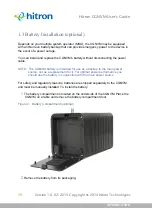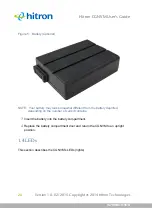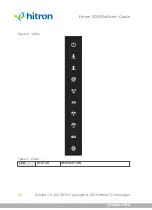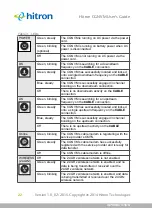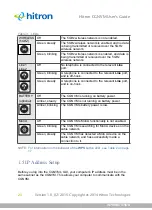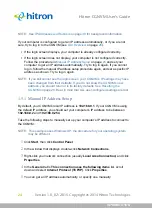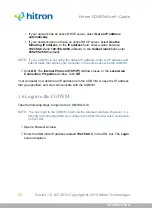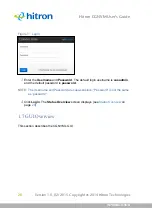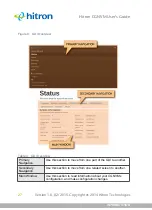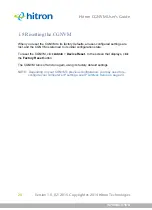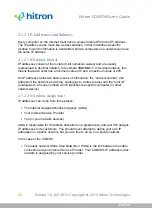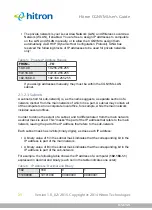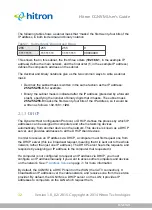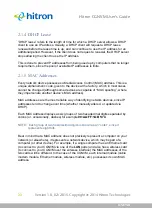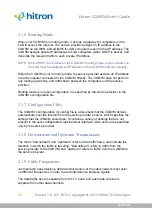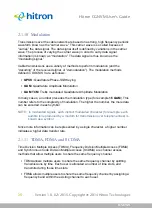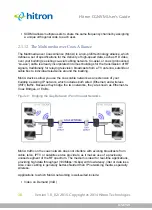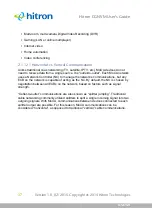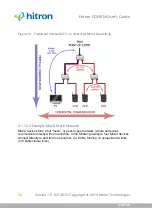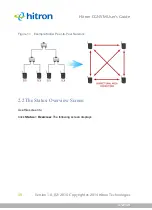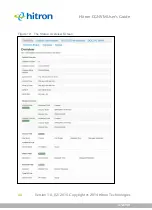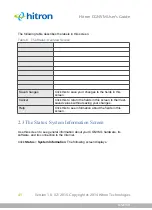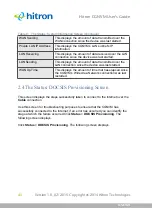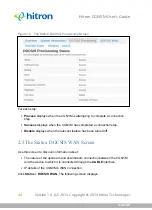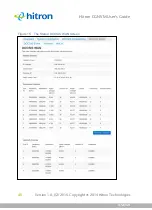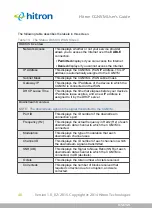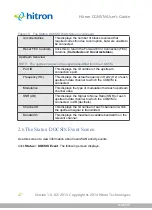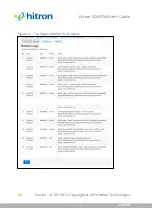
STATUS
Version 1.0, 02/2015. Copyright 2012 Hitron Technologies
33
Version 1.0, 02/2015. Copyright 2014 Hitron Technologies
33
Hitron CGNVM User’s Guide
2.1.4
DHCP Lease
“DHCP lease” refers to the length of time for which a DHCP server allows a DHCP
client to use an IP address. Usually, a DHCP client will request a DHCP lease
renewal before the lease time is up, and can continue to use the IP address for an
additional period. However, if the client does not request a renewal, the DHCP server
stops allowing the client to use the IP address.
This is done to prevent IP addresses from being used up by computers that no longer
require them, since the pool of available IP addresses is finite.
2.1.5
MAC Addresses
Every network device possesses a Media Access Control (MAC) address. This is a
unique alphanumeric code, given to the device at the factory, which in most cases
cannot be changed (although some devices are capable of “MAC spoofing”, where
they impersonate another device’s MAC address).
MAC addresses are the most reliable way of identifying network devices, since IP
addresses tend to change over time (whether manually altered, or updated via
DHCP).
Each MAC address displays as six groups of two hexadecimal digits separated by
colons (or, occasionally, dashes) for example
00:AA:FF:1A:B5:74
.
NOTE:
Each group of two hexadecimal digits is known as an “octet”, since it
represents eight bits.
Bear in mind that a MAC address does not precisely represent a computer on your
network (or elsewhere), it represents a network device, which may be part of a
computer (or other device). For example, if a single computer has an Ethernet card
(to connect to your CGNVM via one of the
LAN
ports) and also has a wireless card
(to connect to your CGNVM over the wireless interface) the MAC addresses of the
two cards will be different. In the case of the CGNVM, each internal module (cable
modem module, Ethernet module, wireless module, etc.) possesses its own MAC
address.

